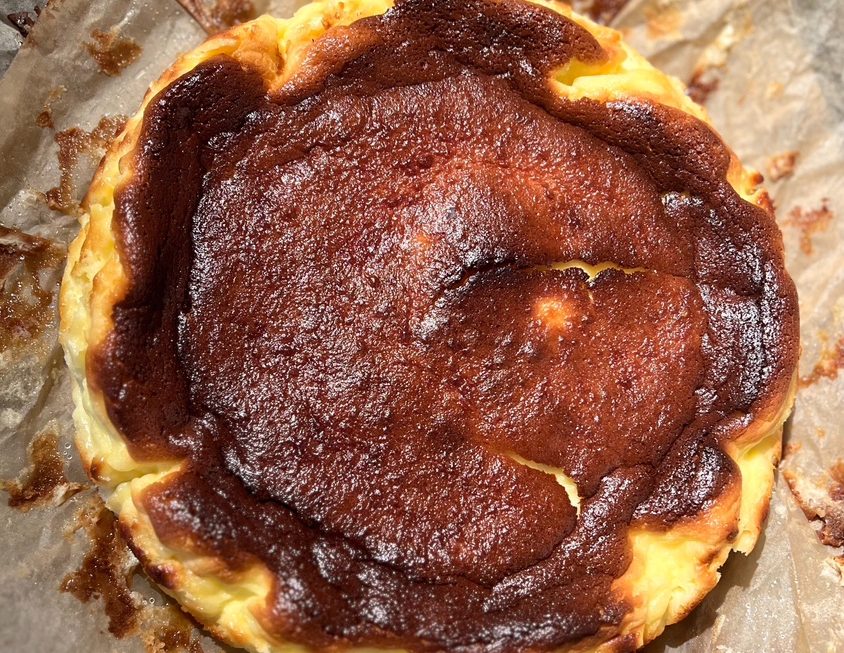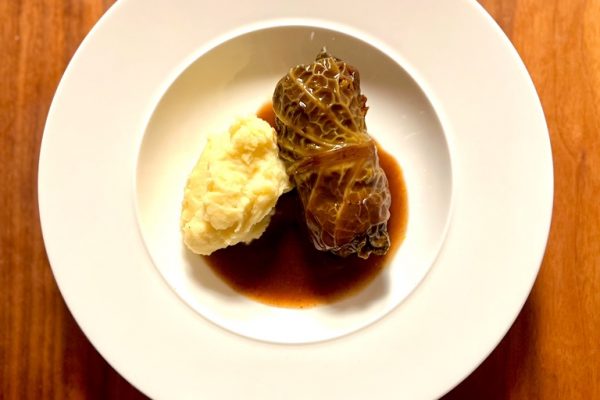Especially on the Internet you can find many recipes for this particular cheesecake, so we are not describing anything fundamentally new here. But how could you when it comes to food. We just want to draw attention to this preparation and encourage you to give it a try.
Visiting San Sebastián, the Basque name for the city is Donostia, can only be recommended. In one of the narrow alleys of this charming little town you will find La Viña (31 de Agosto Kalea, 3), one of those mixtures of restaurant and bar that are common there. La Viña is famous for its cheesecake.
If you come to San Sebastián and the line in front of La Viña should be very long, which it always is, try a slice of cheesecake diagonally across the alley. Also very good. Or just make it at home. However, you need a kitchen machine for this, by hand it will probably be very exhausting.
You will need plenty of cream cheese, a whole kilo. This is best left to take temperature outside the refrigerator to soften.
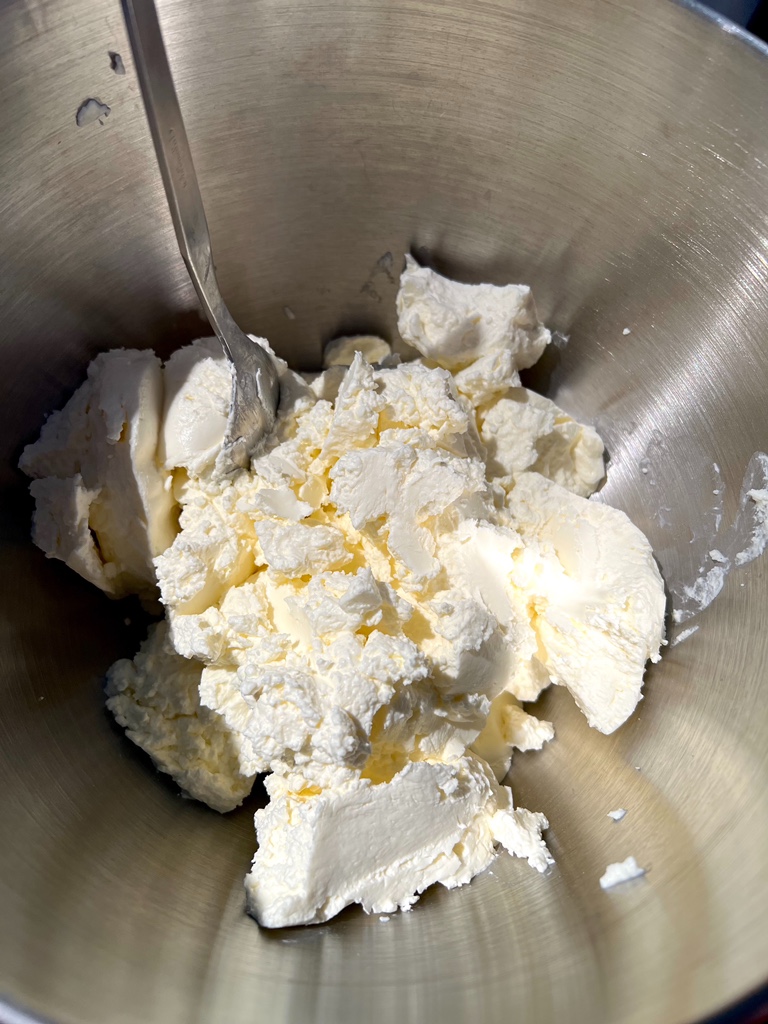
To this is added icing sugar. In some recipes it is stated that less fine sugar can be used, but from our point of view, icing sugar gives the best result.
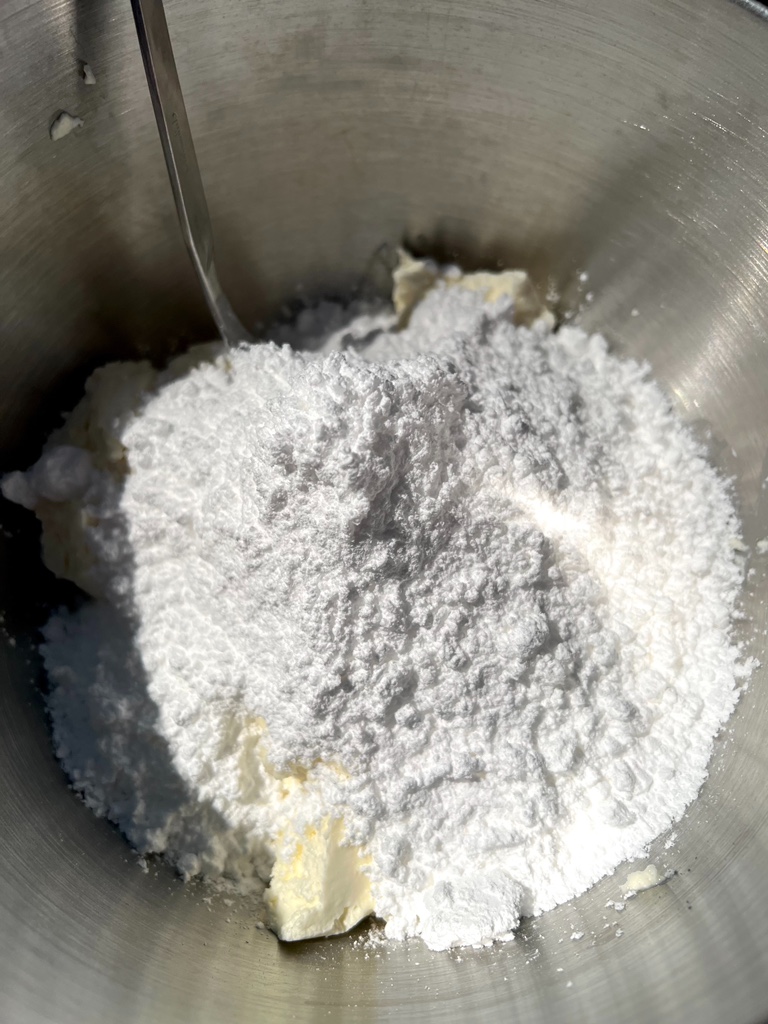
The right tool for the food processor is the so-called “bishop”, shown here:
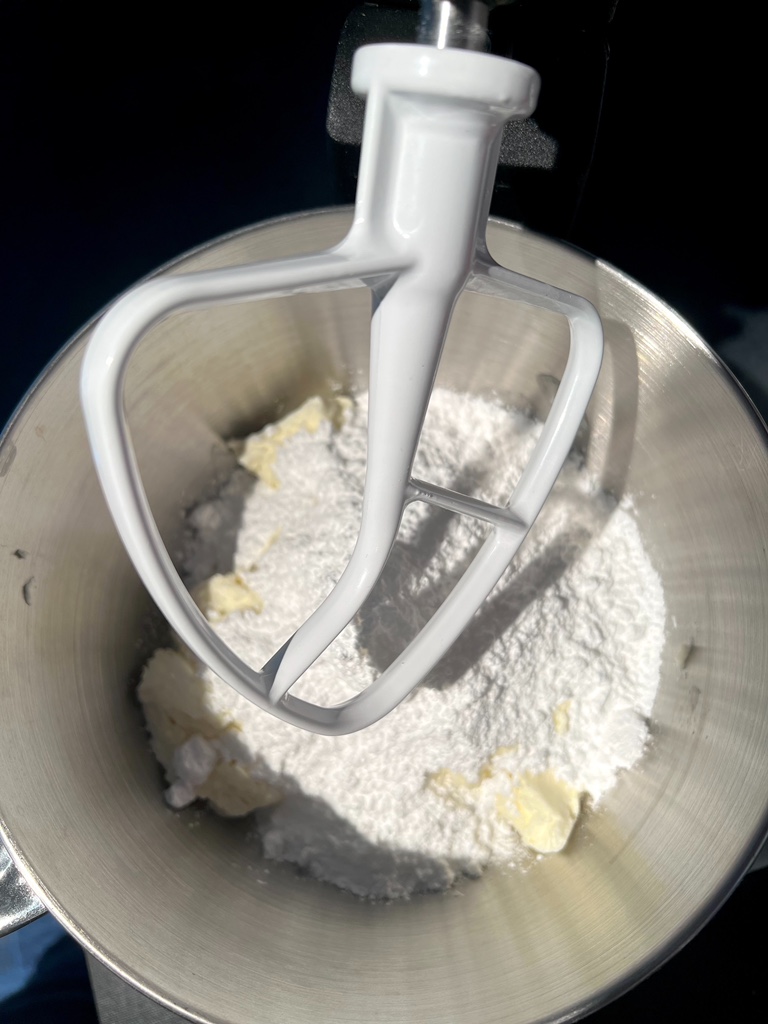
With this, you now stir the cream cheese and powdered sugar on the lowest setting until a creamy, wavy texture is formed. This may well take 6 – 8 minutes and is very dependent on the temperature of the cream cheese. If too much material should settle at the edge, switch off the machine briefly and push everything down with a silicone scraper.
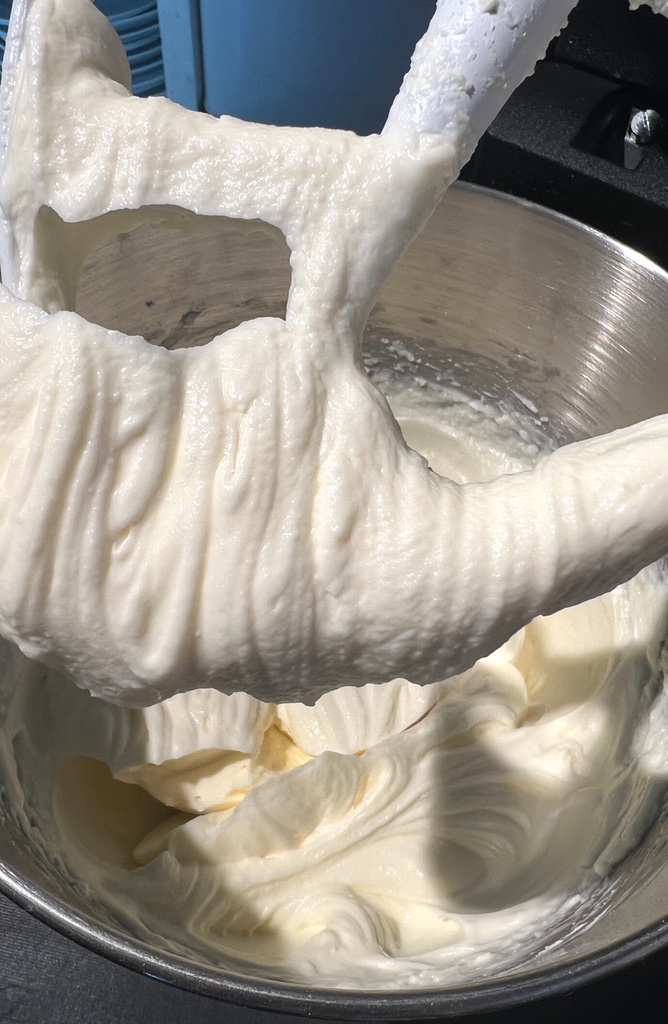
Now eggs are added, one at a time. We beat one egg each into a small bowl and let the machine work for half a minute before adding the next egg. When everything is processed into a fine mass, the machine can be turned off for now.
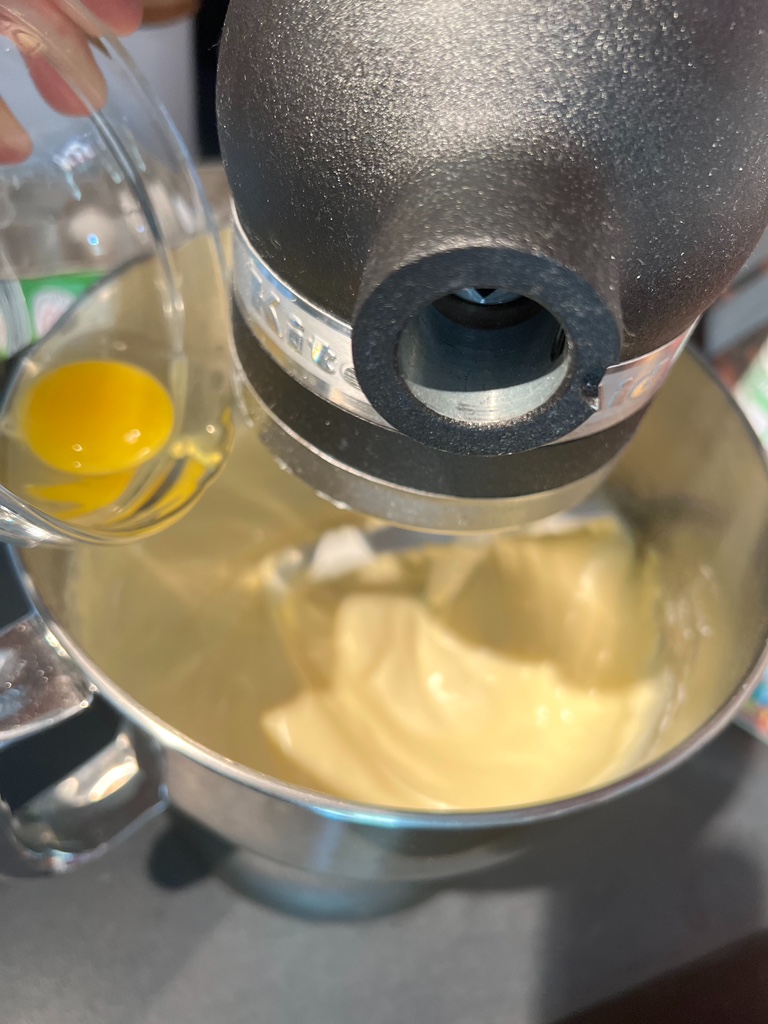
In a separate bowl, mix a small amount of flour – gluten-free flour can also be used very well here – with cream. First with a small part of the cream, so that no lumps form. Once everything is mixed smoothly, the rest of the cream is incorporated.
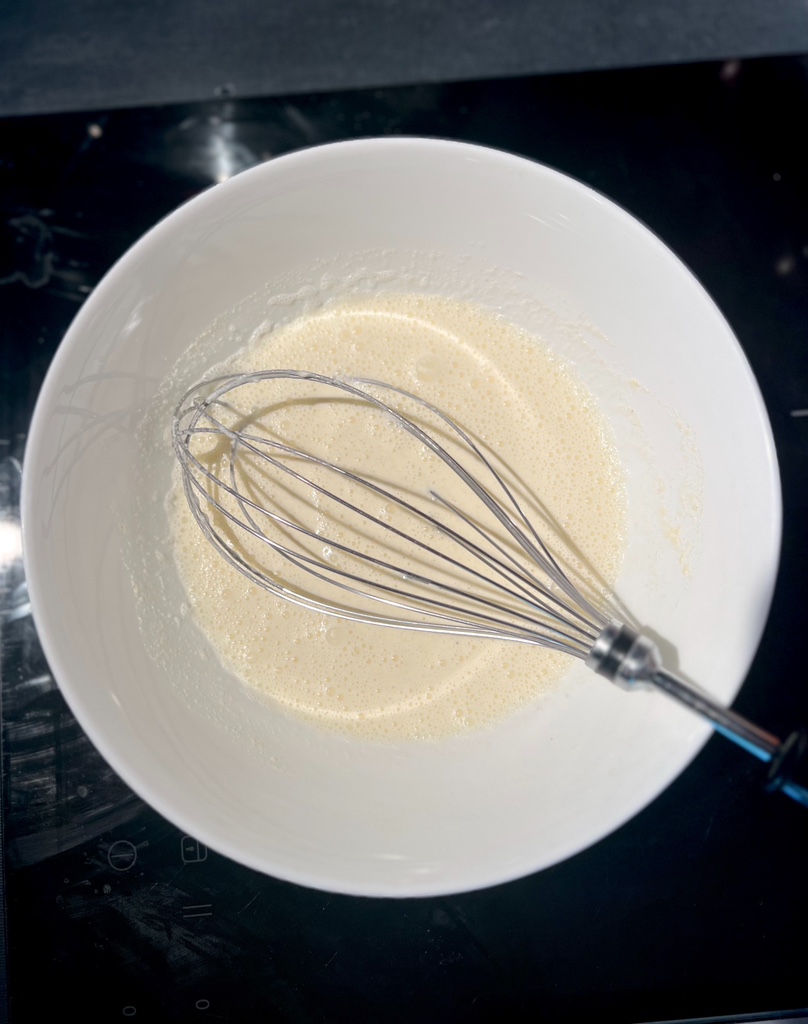
Then this mixture is also put into the machine and all mixed again for 2 – 3 minutes, still always on the lowest setting. Now you can also preheat the oven, to 220 C. We would not use convection here.
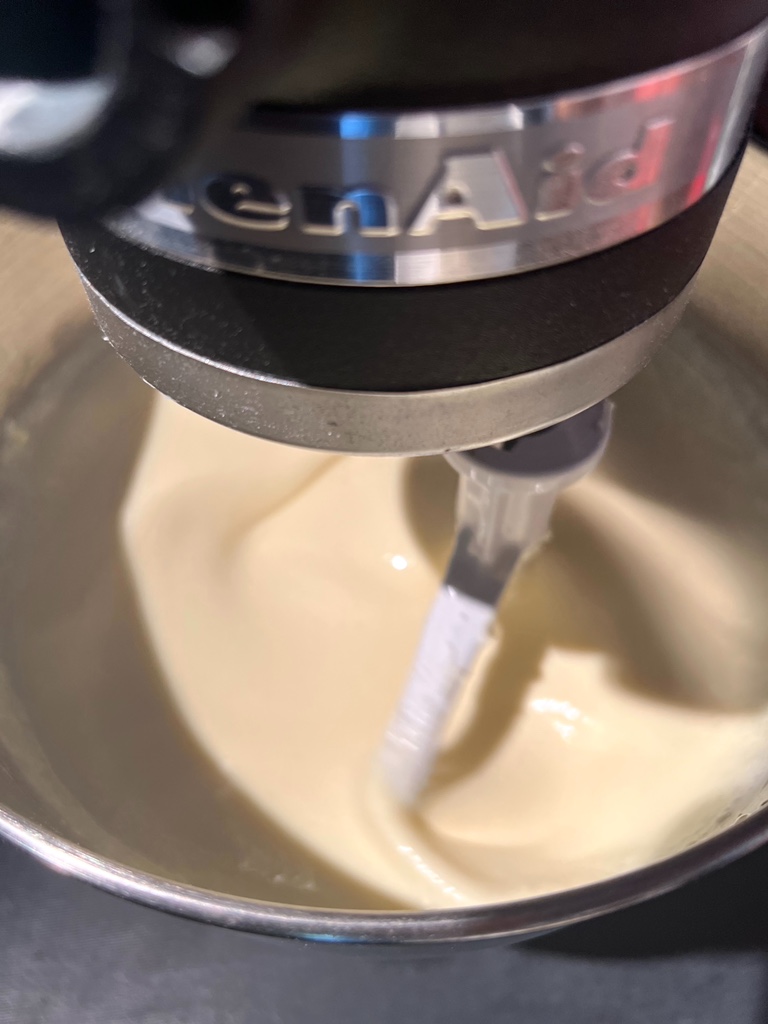
We lightly grease the bottom of a springform pan 26 cm in diameter so that baking paper adheres well to it. Then we put a first baking paper in the center of the form and fold the protruding parts into the edge of the form so that they stand out above it. The higher the better. Cuts of baking paper are the size of an oven tray, so they are not square. If you cut baking paper yourself, then to an equivalent size.
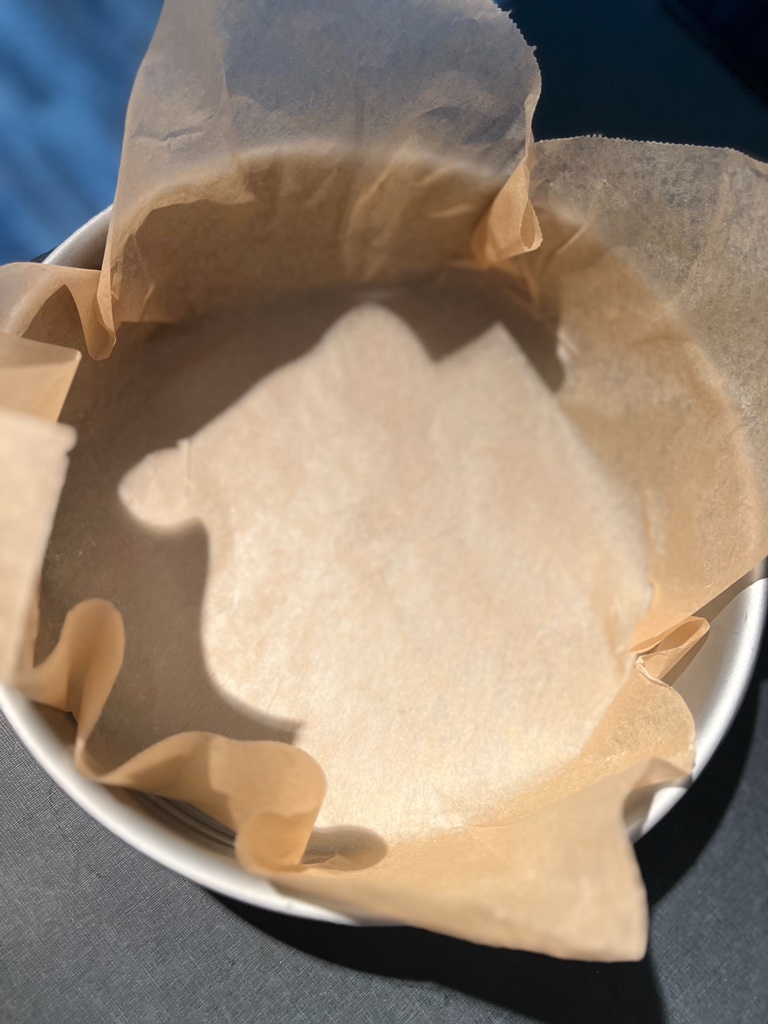
Then we also oil the first baking paper a little in the middle and place a second baking paper on top, this time turned 90 degrees. Again, the protruding parts are folded into the mold and now the baking paper stands all around about the same height above the pan.
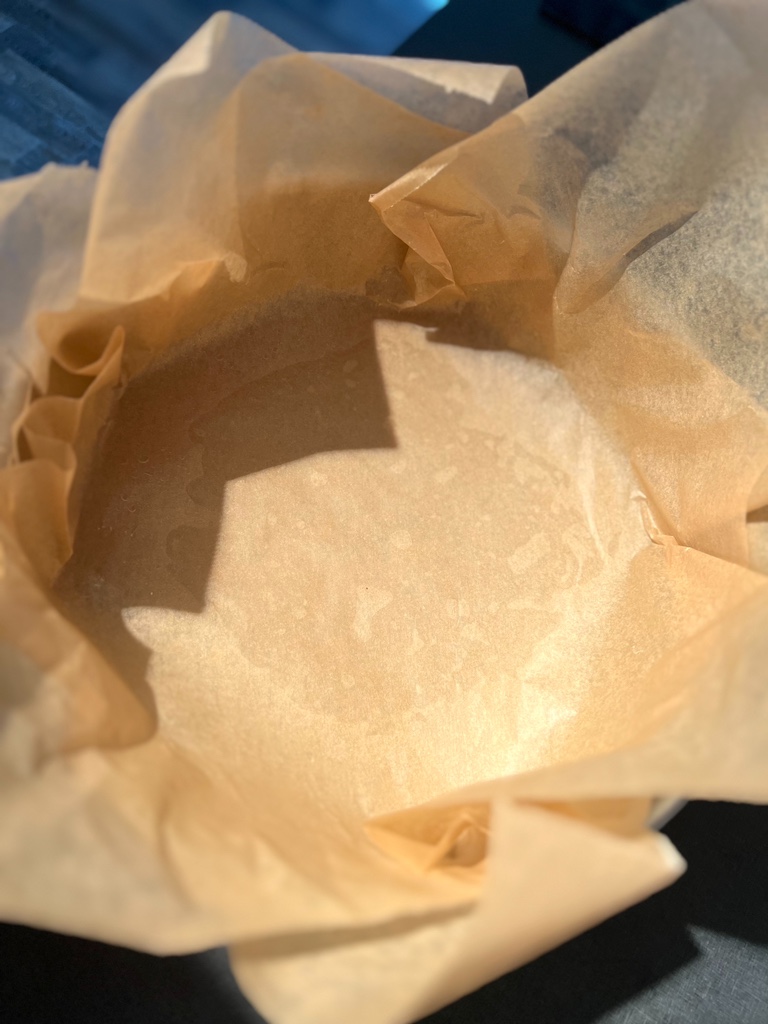
Now the mass is filled into the mold prepared in this way. It does not matter at all if some folds of the baking paper extend into the mass.
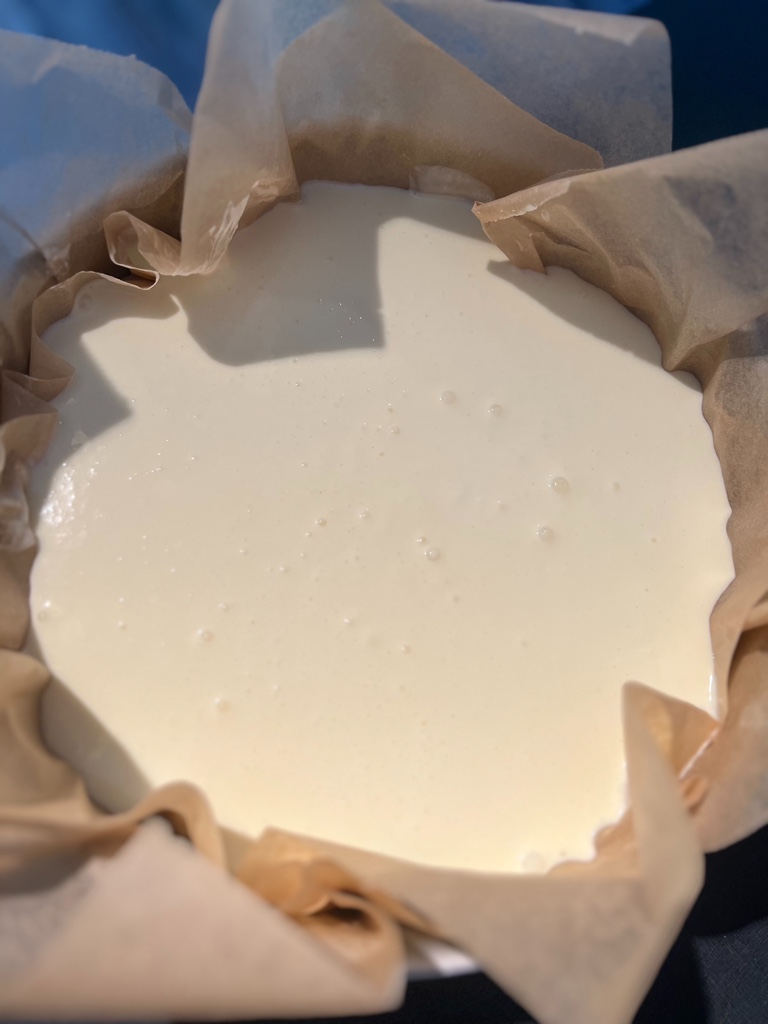
Place the mold in the preheated oven at medium height. Do not open the oven now! The mass will rise quite high, which is why it needs the folded baking paper. And it will be significantly brown on top and that’s the way it’s supposed to be.
From minute 50, you should always look at the degree of browning. Black would be wrong, dark brown is good. After 60 minutes, the cake should be baked to perfection, which was the case for us to the minute.
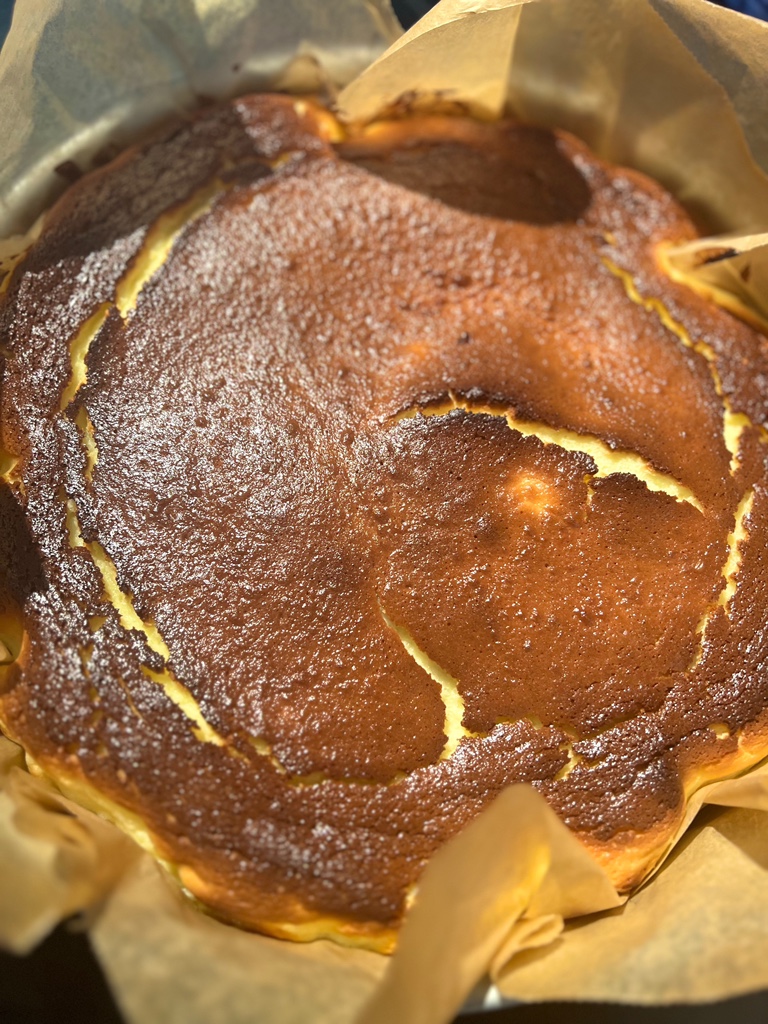
The cake is now still very high and flabby. We let it cool slowly, while it constantly sinks and compacts, which makes the surface appear even darker.
When the cake has almost reached room temperature, it has become firm enough to open the springform pan, remove the ring and carefully take off the baking paper.
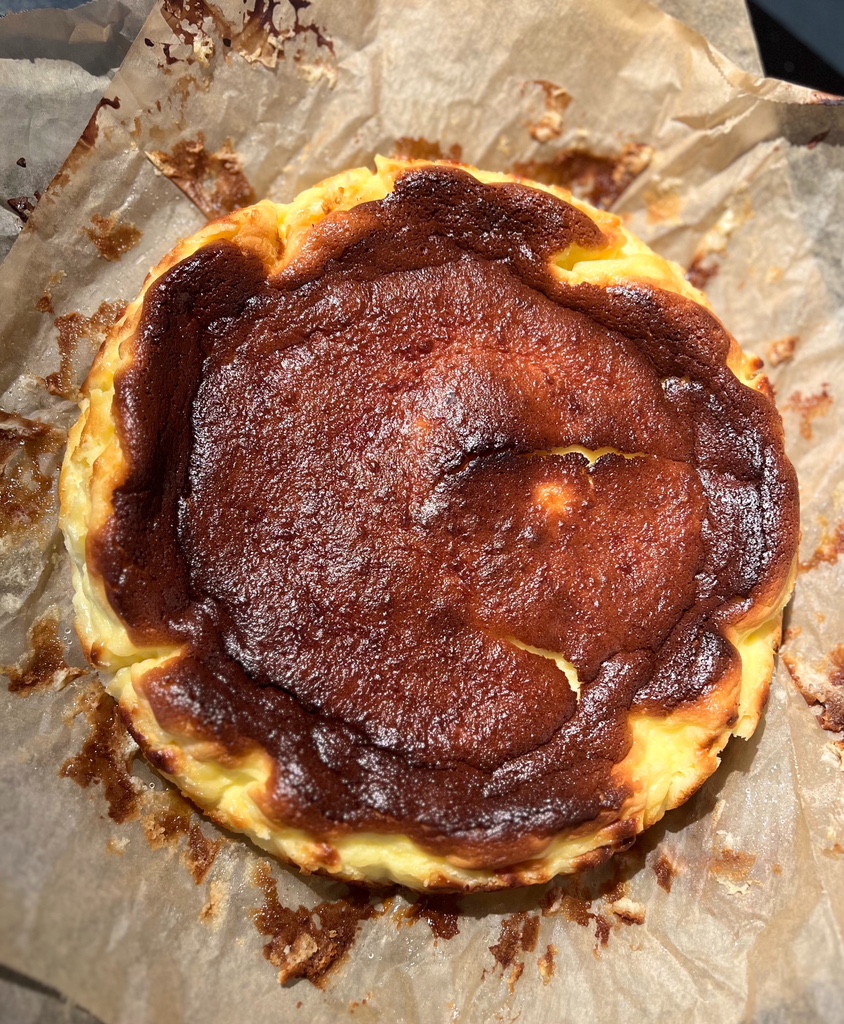
Then the cake goes into the refrigerator, preferably overnight.
For our 18-year-old NextGen, this was too long and we dared to cut the cake after only three hours. There were no complaints.
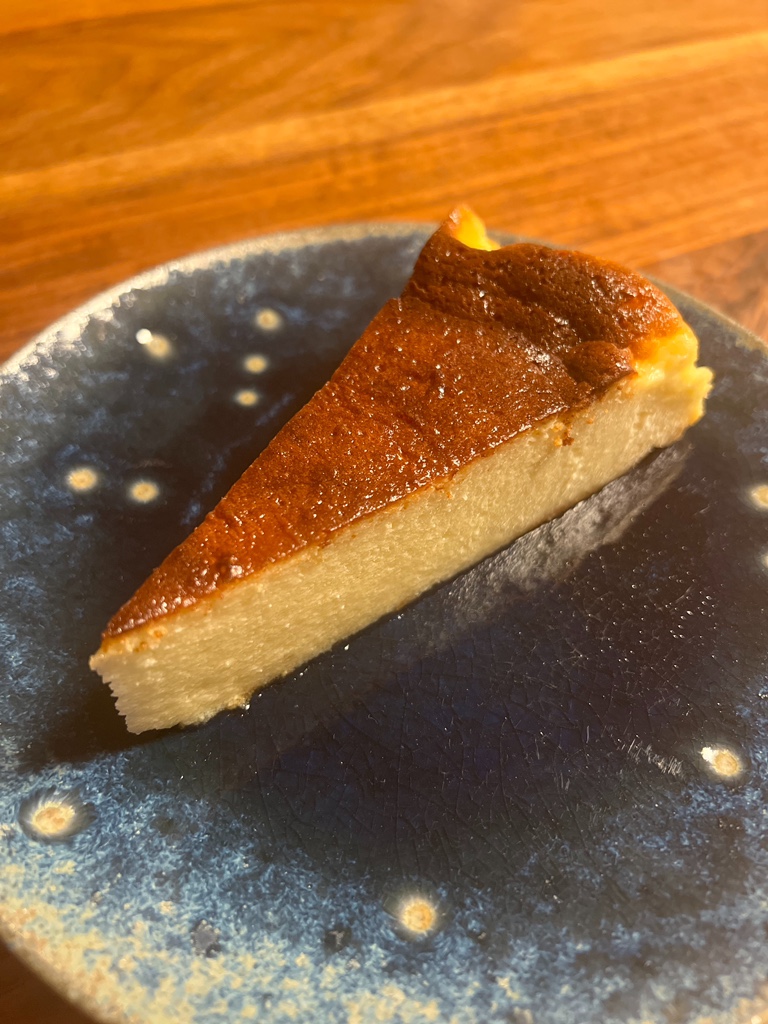
Enjoy.
And may the taste be with you.
Ingredients (for a 26 cm diameter pan):
1 kg cream cheese
340 g icing sugar
7 eggs
40 g flour (standard or gluten-free)
500 g cream
